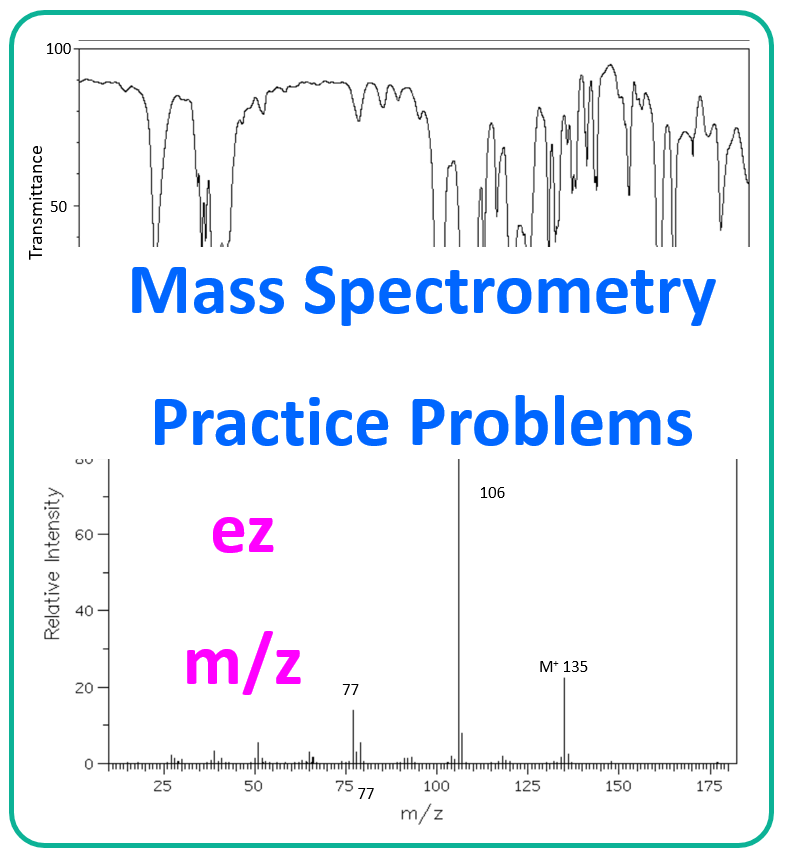 This tutorial on solving mass spectrometry problems is designed to make the process easy by guiding you in the right direction as soon as you start analyzing mass spectra.
This tutorial on solving mass spectrometry problems is designed to make the process easy by guiding you in the right direction as soon as you start analyzing mass spectra.
It is your ultimate step-by-step guide to solving Mass Spec problems using the most common fragmentation patterns for alkanes, alcohols, ethers, and carbonyl compounds, such as alpha cleavage, McLafferty rearrangement, and practical shortcuts.
This tutorial will also be helpful for those of you preparing for the 👩⚕️🩺 MCAT, 💊 PCAT, 🦷 DAT, 🧪 OAT, and other standardized exams that include mass spectrometry in their chemistry sections. Understanding the key principles, common fragmentation patterns, and practical shortcuts will give you an edge when interpreting molecular ion peaks, identifying isotopic patterns, and deducing structures from spectra. Even if your exam only briefly covers MS, mastering these patterns will save time on test day and make it easier to combine mass spectrometry data with IR, NMR, or other spectroscopic information to solve complex problems efficiently.
What is Mass Spectrometry?
The first question we need to answer is:
What is mass spectrometry, and what information does a mass spectrum give me?
In simple terms, mass spectrometry tells you the molecular mass of the compound. Many times, when we’re solving NMR or IR problems, we already have the chemical formula of the unknown, and we use that to determine the unsaturation and then the structure of the molecule.
So, in an ideal world, we would just look at the mass spectrum to see the molecular mass and then move on to the other parts of the question. However, things get more complex than that because mass spectrometry often gives other peaks due to fragmentation, and you may be asked to identify them and rely on other pieces of information to determine the structure.
Therefore, we’re going to make this as straightforward as possible by focusing on the main parts of mass spectra, just like we did for IR spectroscopy.
We will start from carbonyl-containing functional groups, alcohols, and only in the end will we talk about simple alkanes, as this makes the explanation and understanding of the patterns more intuitive.
How to Analyze Mass Spectra
This content is for registered users only.
By joining Chemistry Steps, you will gain instant access to the answers and solutions for all the Practice Problems, including over 40 hours of problem-solving videos, Multiple-Choice Quizzes, Puzzles, Reaction Maps, and the powerful set of Organic Chemistry 1 and 2 Summary Study Guides.

